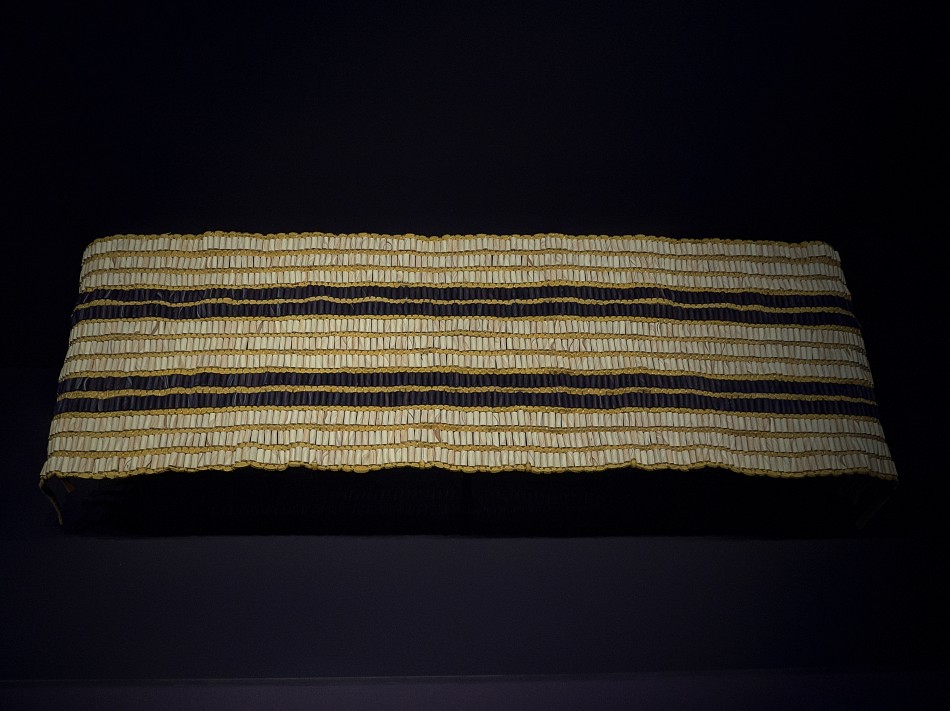Treaties
Introduction

“Guswenta ‘Two Row’ Wampum Belt (Replica)” by keycmndr (aka CyberShutterbug) is licensed under CC BY-NC-ND 2.0
Treaties are the original agreements between Indigenous and settler peoples. One of the earliest agreements was the Two Row Wampum between the Haudenosaunee and the Dutch in 1613. Not all treaties were signed by the government in good faith and treaty relationships continue to evolve today as Indigenous nations seek to rightfully claim what has been denied to them. For example, the ![]() Robinson-Huron Treaty First Nations are currently involved in litigation to increase annuity payments.
Robinson-Huron Treaty First Nations are currently involved in litigation to increase annuity payments.
Not all land in Canada has been ceded through the treaty.
From the Novel
Resources
![]() We Are All Treaty People is a comprehensive module developed by Jean Paul Restoule. It shares about treaties from pre-contact to contemporary times and contains reflective questions and activities.
We Are All Treaty People is a comprehensive module developed by Jean Paul Restoule. It shares about treaties from pre-contact to contemporary times and contains reflective questions and activities.
The Government of Canada offers ![]() information about treaties as well as
information about treaties as well as![]() original treaty texts. These can be used as primary sources.
original treaty texts. These can be used as primary sources.
The Government of Ontario offers an ![]() interactive resource that allows you to click onto different treaty areas in the province. Type in your address and find what treaty land you live on.
interactive resource that allows you to click onto different treaty areas in the province. Type in your address and find what treaty land you live on.
Discussion Questions
1. How have Indigenous peoples been impacted by historic and modern treaties? How is this evident in the book?
2. How have non-Indigenous peoples been impacted by historic and modern treaties? How do non-Indigenous peoples benefit as Treaty peoples?
Activities
1. Ask students if they know the name of the traditional territory that they live on. This website can help students find that information, along with the traditional languages spoken in the area:![]() Native-Land.ca
Native-Land.ca
2. Find a First Nations community in northern Ontario, like where the book is based (hint: you can use the Ontario interactive treaty map shared above). Research the treaty negotiations for this community. Investigate the journey the community has taken from their ancestral grounds to where their reserve is now located. In what ways has their community been impacted?

